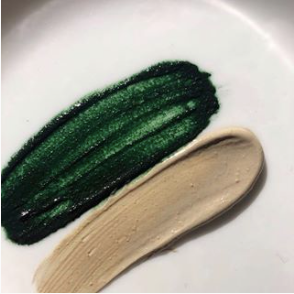What Does Clean Beauty Mean?

The Clean Beauty Debate:
But what does clean beauty mean? This is where things start to get tricky because due to there being little to no federal regulation in the beauty and cosmetics industry, there hasn’t yet been a definite industry wide definition adopted. Until now! One of the goals at Pretty Well Beauty is to not only set the highest standards for clean beauty but to finally define it for everyone once and for all through these efforts. So what does clean beauty mean? Clean beauty is composed of personal care and beauty products that are free from any potentially harmful ingredients that could be toxic in any quantity. This goes for any product that's being used not only in human consumption but that could effect the environment as well. It’s quite simple really, if there is any doubt about a products formulation, a good rule of thumb is to not use it or at the very least research the ingredient(s). Some great sources to start with are the Environmental Working Group (EWG), and the Think Dirty App. At PWB we have done all that heavy lifting for you already so you can shop with ease knowing that any product that passes our strict standards of clean and sustainability will be safe for you and safe for Mother Earth. I like to break down clean beauty into two categories which help me determine how safe a product is and if it’s truly clean. Ingredients and the packaging. Of course we go beyond this and also consider sustainability as part of our core belief but for the purposes of this article we are focusing on just the products in a simple and hopefully easy to understand way.Ingredients:
When evaluating a product or brand, we always start with the ingredients list to determine if the formulation meets the following criteria: Ingredients must be free from any and all toxic chemicals. They must be organically grown and are free from chemical herbicides, pesticides, fungicides or antibiotics and growth hormones. And finally, transparency in labeling is a non-negotiable. All ingredients in the formula MUST be listed AND in the correct order.Packaging:
When evaluating a product or brands packaging we pay close attention to make sure that the packaging will not interfere with the product it contains in any negative way. It's our goal to remove all products packaged in plastic by the end of 2020. This is due to the reality that plastic has the capability to seep into the product it contains. We don't want plastic particles getting into our bloodstream! Does clean beauty mean that its made using only natural and plant derived ingredients? Not necessarily. There are a number of extremely safe and effective synthetic ingredients that pass the clean beauty standards for most brands. There are safe synthetics that pose no health risks for the body or the environment. This subject really comes down to personal preference really. Personally I prefer to stick to 100% plant based skincare and personal care products because that is what my skin likes. However, for others, they might require products that contain science-backed active ingredients that can't be found in nature but are completely harmless. At the end of the day, all our skin is different and have have different needs. So do what's best for you, but do your homework and ask questions first. Here is a quick cheat sheet for you to keep in mind when shopping for clean beauty products. Products formulated with clean ingredients should never have any of the following harmful ingredients in them.Top 10 list of ingredients to avoid:
Synthetic Fragrance
Composed of anywhere from a dozen to hundreds of artificial chemicals. Synthetic fragrance is located in everything from perfume, most skin care products, hair care products and all sorts of cosmetics. This has been linked to extreme skin and respiratory irritations, birth defects, endocrine disruption, neurotoxicity, possible carcinogen, and can set off allergic reactions, asthma attacks and migraines.Parabens
Typically found in most hair products. They are linked to health issues like allergies, endocrine disruptions, possible carcinogen, and developmental, reproductive and immune toxicity.Phthalates
Typically found in synthetic fragrances and hair spray. They may cause birth defects, and endocrine disruption.SLS and SLES
Most commonly found is shampoo, face wash, hand soap, toothpaste and bubble bath. This is a known skin irritant, can trigger allergies and cause cataracts.Formaldehyde
Typically found in nail polish, eyelash glue, shampoos and body washes. This is a carcinogen, causes neurotoxicity, developmental toxicity, asthma, skin and eye irritation, and can trigger allergies.Mineral oil
Most commonly found in baby oil, lipstick, lip gloss, mascara, concealer, foundation, body wash, and hair conditioner. This ingredient doesn't allow the skin to breathe. It also slows down skin’s function and normal cell development causing premature aging and contact. There is also a link to dermatitis .Lead
Typically found in cosmetics primarily in lipsticks. Lead has been linked to neurotoxicity, reduced fertility in men and women, hormonal and menstrual changes, and delayed puberty in girls.Artificial color
Typically found in all color cosmetics and skin care products. Artificial color is linked to skin irritations, allergies, and skin sensitization.PEG's
Typically found in all types of hair products, moisturizers and foundations. This is a possible contaminate with 1,4 dioxane and ethylene oxide, both of which can cause cancer.Triethanolamine
Typically found in facial cleansers, body washes, body lotion, face moisturizers, shampoo, and shaving foams. This ingredient is also linked to liver and kidney damage. May also cause respiratory tract irritation, and can effect the urinary and cardiovascular systems. In conclusion, when you're shopping for beauty products and you want to ensure that products you're browsing are safe, ALWAYS read and then research the ingredients. This is a very useful practice that over time will make your shopping experience that much easier and you should be able to spot harmful ingredients quicker and make impactful and intentional shopping decisions.
xoxo PWB
